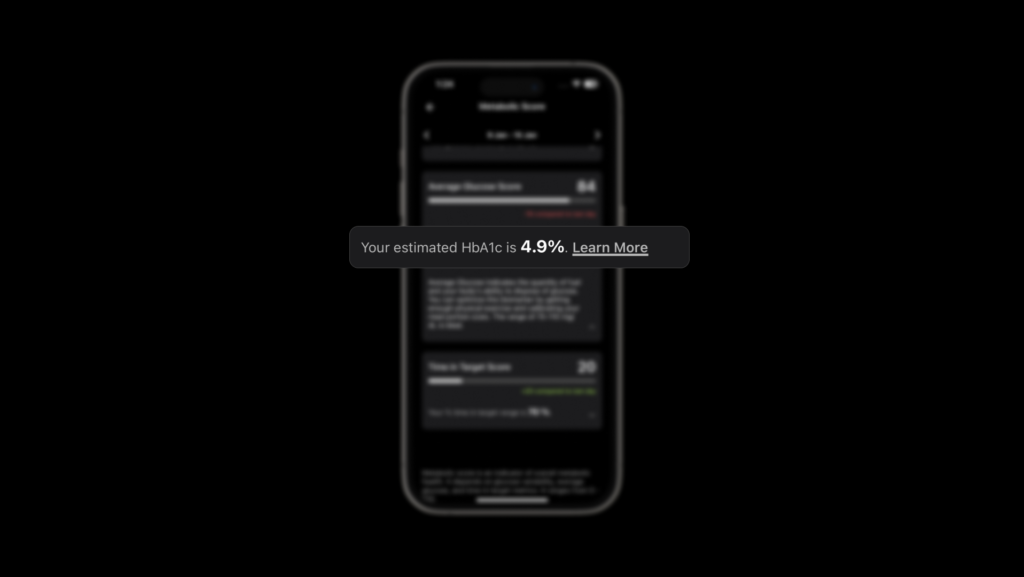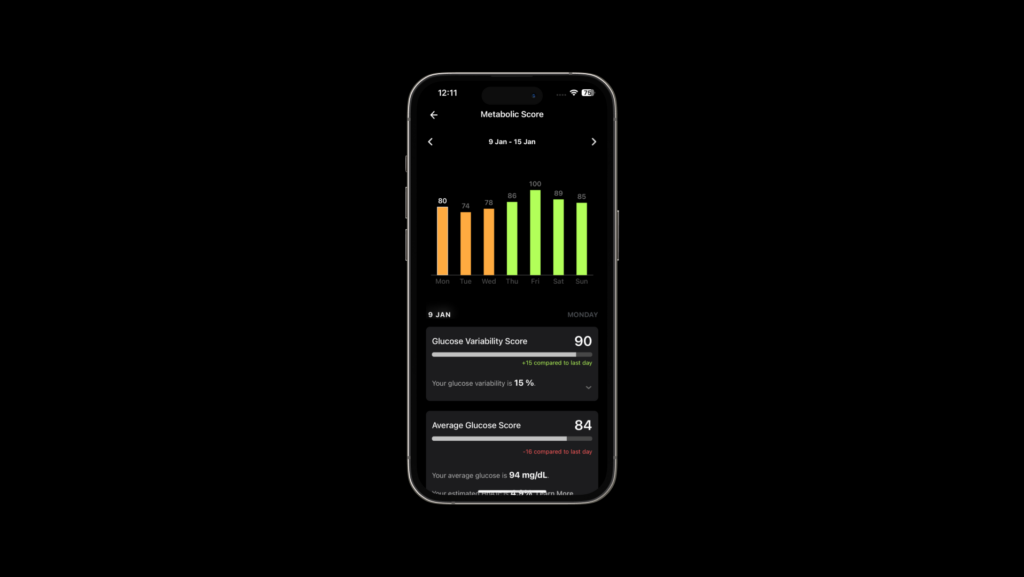The human body is designed to constantly return to its equilibrium, or ideal state, known as homeostasis. This is done with the help of hormones present in the body’s endocrine system, which regulates the functioning of the body to bring it back to its original, balanced state. The health and vitality of an organism depend on proper homeostatic regulation. But what happens when the body perceives danger or faces a situation of chronic stress? How do your hormones play a role in protecting your body, and what are the long-term effects of this short and sudden need for protection? These are some of the questions we are attempting to answer.

Highlights
- The sympathetic nervous system activates the body’s fight-or-flight response when the body senses danger or a stressful situation and secretes a hormone called adrenaline,
- The adrenaline gears the body for the fight-or-flight response, it causes a sharp and short-lived increase in blood sugar levels,
- Adrenaline is a metabolic hormone that has a deep influence on the cardiovascular system and is considered a hyperglycemic agent.
We will also be focusing particularly on the role of adrenaline—the ‘fight-or-flight hormone’—in the body, especially with reference to insulin and blood glucose levels. Before that, however, we need to understand the functioning of the autonomic nervous system (ANS), its components and the roles they play in the human body.
The Autonomic Nervous System
The ANS is a part of the peripheral nervous system. It regulates involuntary body functions such as digestion, breathing and excretion. Its primary aim is to maintain homeostasis and it is divided into the following:
1. Sympathetic nervous system
This is located in the thoracic and lumbar (upper, middle and lower back) spine region. It is responsible for the body’s fight-or-flight response and manages this by regulating the heart rate, respiratory rate, etc.
2. Parasympathetic nervous system
This is located between the spinal cord and the medulla (lower part of the brainstem). It is responsible for the body’s rest-and-digest function.
What is Adrenaline?
The sympathetic nervous system activates the body’s fight-or-flight response. When the body senses danger or a stressful situation, the nerves connected to the adrenal glands get activated and secrete a hormone called adrenaline, also known as epinephrine, to help the body fight or flee a dangerous situation. The secretion of adrenaline happens fairly quickly (within 2 to 3 minutes of the body sensing danger). When the stressful situation or danger is averted, the impulses sent to the adrenal glands are lowered and the adrenal glands stop the production of adrenaline.
Adrenaline’s response to short-term stress
The body’s stress response starts in the brain. When there is stress, whether real or perceived, a part of the brain known as the amygdala (an area that contributes to emotional processing) decodes sights and sounds. The amygdala is responsible for interpreting images and sounds. When it perceives danger, it instantly sends a distress signal to the hypothalamus, which links the ANS to the endocrine system via the pituitary gland.
In other words, the hypothalamus communicates with the body via the ANS. When the body experiences stress or senses danger, the sympathetic nervous system gets mobilized. The sympathetic nervous system then stimulates the adrenal glands to cause the secretion of catecholamines, which are hormones produced by the adrenal glands, including adrenaline and noradrenaline, a hormone, neurotransmitter, and vasopressor (it constricts blood vessels and raises blood pressure). This is how adrenaline instantly kicks in when the body perceives immediate (short-term) stress or danger.
How does Adrenaline affect Blood Glucose levels
When the catecholamines are secreted into the bloodstream, several physiological changes in the body occur, such as spikes in the heart rate, blood pressure, and respiratory rate, while the body’s sense of awareness sharpens. Blood is then pumped to the vital organs. These are evolutionary adaptations to increase the chances of survival in life-threatening situations.
Since adrenaline gears the body for the fight-or-flight response, it causes a sharp and short-lived increase in blood sugar levels. Adrenaline floods the body with glucose to provide a prompt source of energy to fight or flee the stimulus. However, this increase in blood glucose also increases insulin resistance because the body is unable to absorb the blood sugar efficiently despite the pancreas secreting sufficient insulin. Therefore, circulating glucose in the blood remains high because of this ‘stress hormone’.

Adrenaline leads to Cortisol production
Once the initial deluge of adrenaline subsides, the hypothalamus rouses the hypothalamic-pituitary-adrenal (HPA) axis, consisting of the hypothalamus, the pituitary gland and the adrenal glands. The HPA axis relies on a series of hormonal signals to moderate the sympathetic nervous system. If the brain continues to detect something threatening in the environment, the hypothalamus triggers the release of corticotropin-releasing hormone (CRH), which then triggers the release of adrenocorticotropic hormone (ACTH) from the pituitary gland.
Cortisol is then produced in the adrenal cortex. This is the body’s warning system. It regulates blood pressure, increases blood sugar and dictates sleep-waking cycles (circadian rhythm) as well as how our bodies use proteins, fats and carbohydrates. It is tethered to the fight-or-flight response. This is how adrenaline eventually leads to a spike in cortisol levels.
The connection between Chronic stress and Blood Glucose levels
Adrenaline is a metabolic hormone that has a deep influence on the cardiovascular system. It is considered a hyperglycemic agent. A low blood sugar level triggers the release of adrenaline. The fight-or-flight hormone leads to symptoms of hypoglycemia, like a pounding heart, tingling, sweating, dizziness, and anxiety. The action of multiple hormones in the fight-or-flight stage as explained above causes hyperglycemia.
Chronically high-stress levels and the resultant adrenaline continue to elevate the cortisol levels and, over time, the high cortisol levels block the ability of insulin to remove excess glucose from the bloodstream, keeping the blood sugar levels high. Insulin resistance occurs when, despite the release of insulin, cells in the body are unable to use it efficiently. Cortisol does not allow insulin to do its job.
Only when the body realizes that the stress has passed does the cortisol level drop to trigger the parasympathetic nervous system, which then elicits the relaxation response in the body. The relaxation response is the antithesis of the body’s stress response. It is when digestive functioning, blood pressure, heart rate and hormonal levels come back to normal levels.
In the long run, with frequent pumps of adrenaline, cortisol levels in the blood remain high. This regular increase in cortisol levels and the subsequent glucose spikes can make the human body more susceptible to metabolic syndrome. Metabolic syndrome refers to a group of conditions that occur simultaneously and elevate your risk of type 2 diabetes, heart disease, and stroke.
If left unchecked, a pattern of cortisol release can leave blood sugar or glucose levels at a dangerously raised baseline. The increase in glucose without adequate insulin to allow it to be processed by a cell as energy can contribute to obesity concentrated in the abdominal area, hypertension, dementia, type 2 diabetes, and depression. Incessant exposure to stress hormones can put people with prediabetes at increased risk of developing type 2 diabetes.

Five ways to reduce effects of Adrenaline on Blood Glucose
Controlling adrenaline, in the long run, would require the body to activate the parasympathetic nervous system known for its rest-and-digest function, which is the opposing response to the fight-or-flight response caused by adrenaline. It helps bring the body back to its equilibrium state and reduces cortisol levels in the body. Here are some ways to control adrenaline in the body and mitigate its effects:
1. Practice calming exercises: Regularly practising activities such as yoga, tai chi, deep abdominal breathing, sitting in tranquil environments and meditating can help the body get out of its chronic stress state. These activities stimulate the parasympathetic nervous system, reducing the heart rate and respiratory rate and ultimately relaxing the body.
2. Being physically active: Regular physical activity or exercise can improve the respiratory system, enhance mental focus and induce muscle relaxation, which ultimately helps trigger the body’s relaxation response. According to Harvard Health, working out helps reduce cortisol and adrenaline while stimulating the production of endorphins. These chemicals in your brain are known as the body’s ‘natural painkillers’ and induce feelings of relaxation and optimism. Activities such as brisk walking, swimming, tai chi, yoga, and qigong are particularly helpful in reducing stress.
3. Limiting caffeine intake: Caffeine makes the body alert. It blocks the effects of adenosine, a chemical released by the brain that makes the body feel tired. Caffeine simultaneously triggers the release of adrenaline from the adrenal glands, which increases the energy levels in the body. Additionally, caffeine also increases the heart rate, and respiratory rate impairs digestion and causes insomnia, all of which are detrimental to the body’s rest-and-digest function.
4. A well-balanced diet: Eating healthy and consuming well-balanced meals can help the body keep blood pressure and glucose levels in check. For instance, eating complex carbohydrates prompts the brain to make more serotonin, which helps alleviate stress. Additionally, steering clear of simple carbohydrates that spike blood sugar levels can help stabilize glucose levels in the blood, improve the functioning of the immune system and reduce stress levels.
5. Avoiding brain-stimulation activities before bed: Avoiding any activities that wake the brain up before bedtime is crucial. Electronic devices such as cell phones, TVs and computers should be avoided before bedtime to improve the quality and quantity of sleep. Improved sleep leads to lower levels of stress and a better rest-and-digest function in the body. Additionally, avoiding bright lights and loud music before retiring for the day can also ensure better sleep and lower cortisol levels in the blood.
Conclusion
When the body’s fight-or-flight response kicks in, the adrenal glands release a hormone called adrenaline. This hormone is necessary for the short term to fight or flee danger. In the long run, however, it can cause physiological changes that affect blood glucose levels. Over time, adrenaline can lead to a build-up of cortisol which can further detrimentally affect the body, leading to psychological and physiological changes in the body like hypertension, diabetes, and so on. However, there are ways to mitigate stress and reduce the impact of the long-term effects of stress, including doing regular breathing exercises, working out, eating healthy, limiting one’s caffeine intake, and making sure you get a good night’s rest.
Disclaimer: The contents of this article are for general information and educational purposes only. It neither provides any medical advice nor intends to substitute professional medical opinion on the treatment, diagnosis, prevention or alleviation of any disease, disorder or disability. Always consult with your doctor or qualified healthcare professional about your health condition and/or concerns and before undertaking a new healthcare regimen including making any dietary or lifestyle changes.







